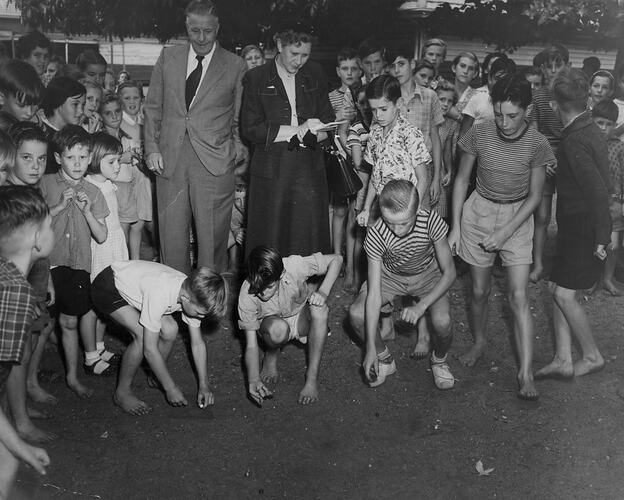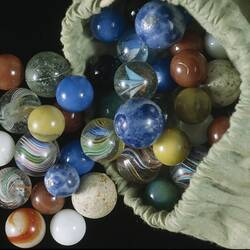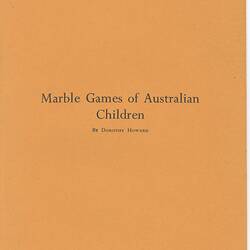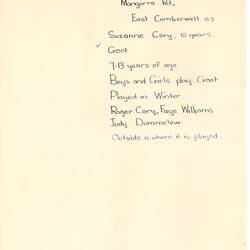Accounts of marble playing in Australia have been recorded in many personal diaries and memoirs, and documented more systematically by folklore collectors and researchers. The Australian Children's Folklore Collection contains more than 150 descriptions and photographs relating to marble playing. The most detailed account comes from Dorothy Howard who, as an American Fulbright scholar, researched Australian children's play and games in 1954-55. The Dorothy Howard collection includes 109 descriptions of marble games.
Dorothy Howard's monograph Marble Games of Australian Children provided, as she describes it, 'a tourist's view' of marble playing in Australia. Her research tracked the game from early written accounts from the 1860s, when marbles was played 'in open spaces, unmade sandy footpaths, open paddocks, earthy playgrounds'. By the mid-1950s, with increasing urbanisation and concentration of the Australian population in big cities, Howard concluded that marble games based around digging holes was diminishing in favour of surface games using various patterns. Despite increasing supervision of school playgrounds and less play space for children, she was delighted to observe that 'surviving a fast changing environment by the process of adaptation Australian marble games in 1954-55 had thus far eluded scheming adults' (Howard, 1960).
Howard recorded the following marble games across Australia: Follow-Me-Taw, Follow, Black Track, Track Taws, Nine Holes, Prince Henry, Wall, In the Ring, The Ring, Circle, Big Ring, Little Circle, Poison Ring, Jumbo, Eye Drop, Pyramids, Football, Fats, Kill, In the Hole, Half Moon, Townsey, Mooney Ted First, Killy, Three Corner Kill, Square Ring, Liney, Basins, Bunny Hole, Holely, Goot, Castles, Pot Holes, Poison, Holes, Nucks, Nux, Toodlembuck, Stick on Scone, Taw, Agate Taw, Commonies, 'Steelies, Alley (marbles, marble-chasing games, marble surface games, marble hole games).
References
Howard, D. (1960). Marble Games of Australian Children, London. Offprint from Folklore, Volume 7, September.
More Information
-
Keywords
-
Localities
-
Authors
-
Article types




